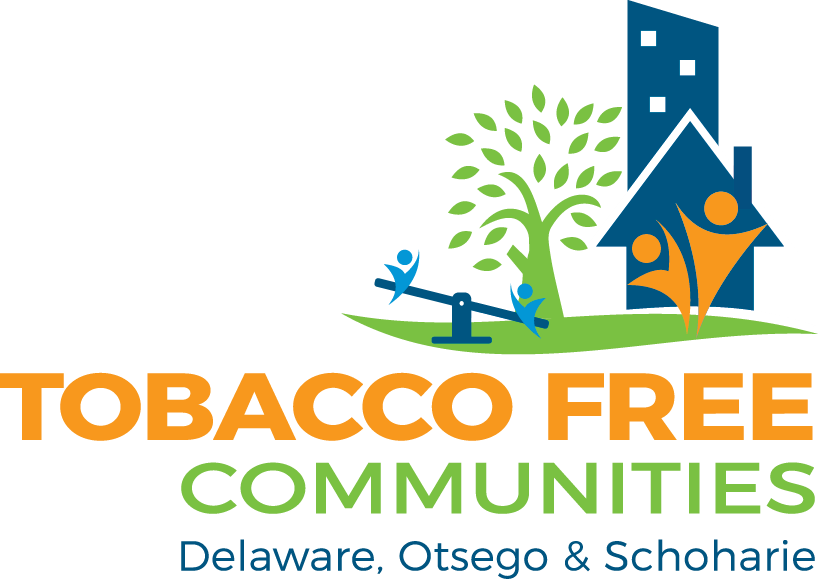Communities Must Recognize the WHOLE Truth About the Tobacco Industry
“The court also found the tobacco companies guilty of lying about marketing their lethal products to children all these years,” said Regina Haig, Youth Engagement/Reality Check Coordinator with Advancing Tobacco Free Communities in Delaware, Otsego and Schoharie Counties (ATFC-DOS). “Yet they are still allowed to be in business and spend $8.1 billion dollars marketing their products in stores and elsewhere in communities throughout the U.S. to addict more people. We need to continue protecting New Yorkers with comprehensive tobacco control. This fight is not over.”
The first ads began appearing in dozens of major newspapers around the nation on Sunday, November 26. The first television ads also began appearing this week and will run Mondays through Thursdays between 7 – 10 pm on one of the three major networks (CBS, ABC, NBC).
For more than eleven years, the tobacco companies have sought to weaken and delay the corrective statement ads ordered by the judge. The ads containing the corrective statements about the health dangers of smoking stem from a landmark lawsuit filed by the U.S. Justice Department in 1999 and a landmark judgment issued in 2006 by U.S. District Judge Gladys Kessler. Judge Kessler found the tobacco companies guilty of civil racketeering laws and of lying to the American people for decades about the dangerous health effects of smoking and their marketing to children.
Six public health organizations – American Cancer Society, American Heart Association, American Lung Association, Americans for Nonsmokers’ Rights, National African American Tobacco Prevention Network and the Tobacco-Free Kids Action Fund (a 501c4 affiliate of the Campaign for Tobacco-Free Kids) – joined the case as interveners in 2005 to ensure the public health interests were effectively presented to the court.
“Who believes that tobacco products packaged like candy with flavors like bubble gum and grape on display at a 10-year-old’s eye level are being marketed to adults?” asked Ava Valetutto, a Reality Check youth advocate and student at Sharon Springs Central School. “That is why Reality Check is fighting against the manipulative and deceptive marketing tactics of the tobacco industry. We need to continue to fight the tobacco industry and invest in protecting youth because the average age of a new smoker is just 13.”
Judge Kessler’s Final Opinion states the defendants’ marketing is a substantial contributing factor to youth smoking initiation. In part, her Opinion reads, As Bennett LeBow, President of Vector Holdings Group, stated, “if the tobacco companies really stopped marketing to children, the tobacco companies would be out of business in 25 to 30 years because they will not have enough customers to stay in business.”
“For 50 years tobacco companies denied and lied. Corrective statements are not enough. We also need strong corrective actions to win the fight against the tobacco industry,” said Brea Fyfe, a Reality Check youth advocate and student at the Oneonta Community Christian School. “I was upset to learn that tobacco companies still market their most popular brands to youth. In fact, stores popular among adolescents contain almost three times more tobacco marketing materials compared to other stores in the same community. Our local communities must fight to create a tobacco-free generation.”
Despite progress in reducing smoking rates, tobacco use is still the leading cause of preventable death and disease in New York State and the nation. While the current smoking rate among adults in New York State is 14.2%, the smoking rates in the Delaware, Otsego and Schoharie region are 22.9% for Delaware County, 26.3% for Otsego County and 19.3% for Schoharie County. More than 28,000 New Yorkers die every year from smoking-related illnesses.
The NYS Department of Health’s Bureau of Tobacco Control provides grant funds to the Research Foundation of SUNY at SUNY Cobleskill to implement ATFC-DOS. ATFC-DOS educates the community and decision makers, mobilizes community members around the problems that tobacco addiction causes in local communities, and helps decision makers understand the types of choices that they have to address these problems.



